Up Next

It’s very difficult for Alpine to get a genuine reference for where it really stands among the Formula 1 field.
It’s the only team using the Renault power unit package, so that means just one team and two drivers for development feedback, while reliability-wise that’s just two units worth of mileage for each race weekend – and one during pre-season testing.
Compare that to its rival works teams – Mercedes has eight sets of info, Ferrari six and Honda (under the Red Bull name) four – that definitely is a limitation and will hurt development.
Alpine has talked up the power unit step it has made, which we know now has switched to the split turbo design introduced by Mercedes back in 2014, that’s eight years ago – but it is going to have to live with that lack of feedback. But what’s crucial is that the feedback is listened to which has not always been the case in the past.
Over the winter, the team has had a fairly major management shakeup. It’s always difficult when that sort of thing happens but it was about time. As far as the race team is concerned, the addition of Otmar Szafnauer as team principal will be a positive move. In the past structure, I’m not convinced anyone knew who they actually worked for.
The Alpine launch was a strange one, not least because CEO Laurent Rossi talked of the aim being at least fifth place. Alpine is one of the few genuine works teams in F1, and fifth place in its seventh season since Renault took over the team with new regulations surely isn’t good enough? Perhaps it’s just keeping the pressure as low as possible.
The launch featured two show cars with different coats of paint so there was nothing to see there. But some renders of the real car, which is being hastily assembled in Barcelona ahead of a planned shakedown on Tuesday, were released.
It’s impossible to be sure of how close they will be to the real car but a closer look at the renders will tell us some of what Alpine has been up to over the winter – although I’m sure there will be some secrets hidden from us.
NOSE/FRONT WING
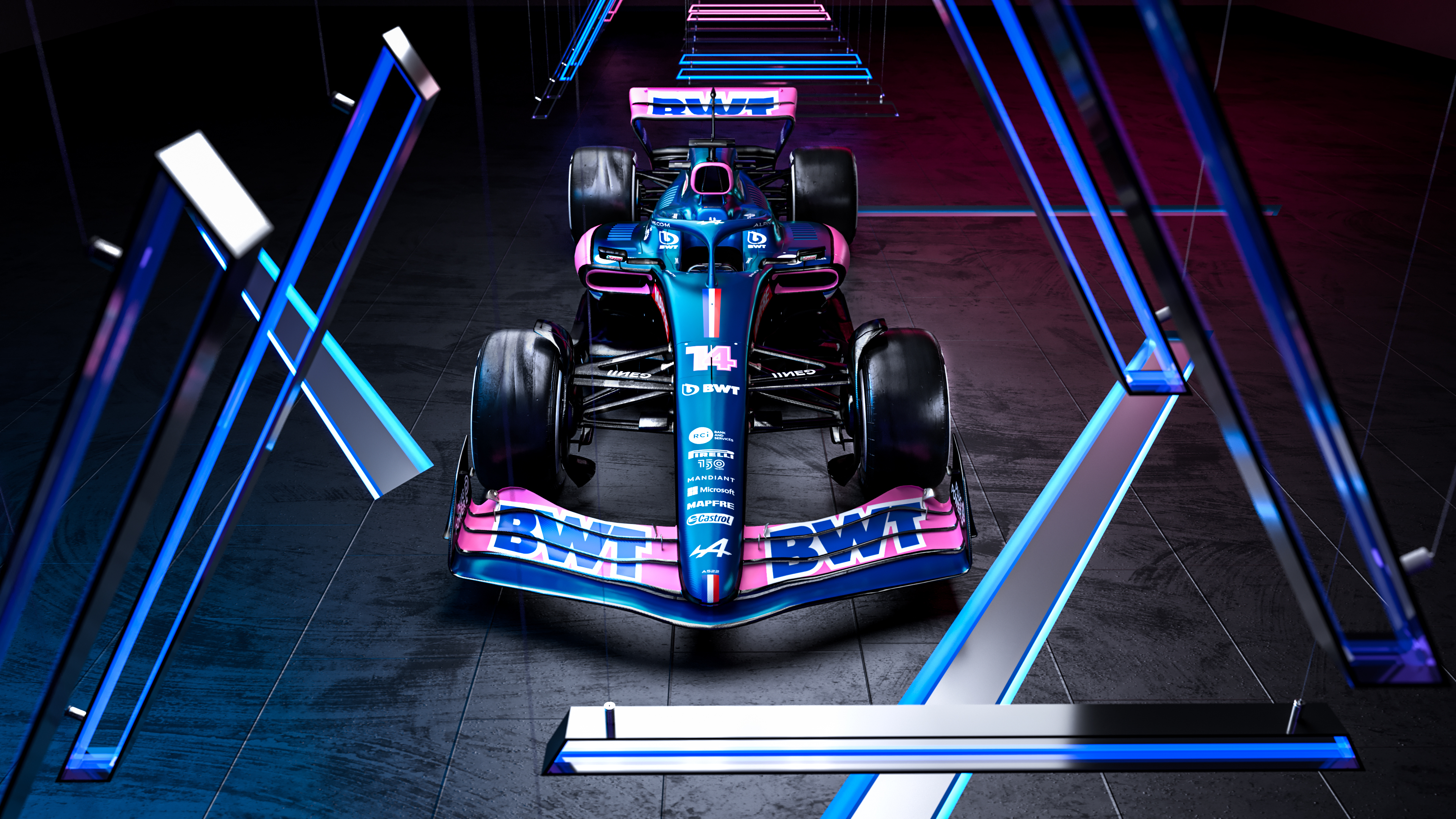
Alpine appears to be another team to have gone for a slot gap between the leading element and the second element of the wing assembly. But I’m not sure that the first element will be stiff enough as it has no slot-gap separators to support it – perhaps something is missing from the renders there?
The rear element is a very short chord, but I expect that to grow in line with the plan view area that is allowed in the regulations. If this is genuine, it might just be Alpine’s Monza version so I don’t expect it to see the light of day too often.
The endplates are very basic flat panels so there’s potential for more refinement there.
FRONT SUSPENSION
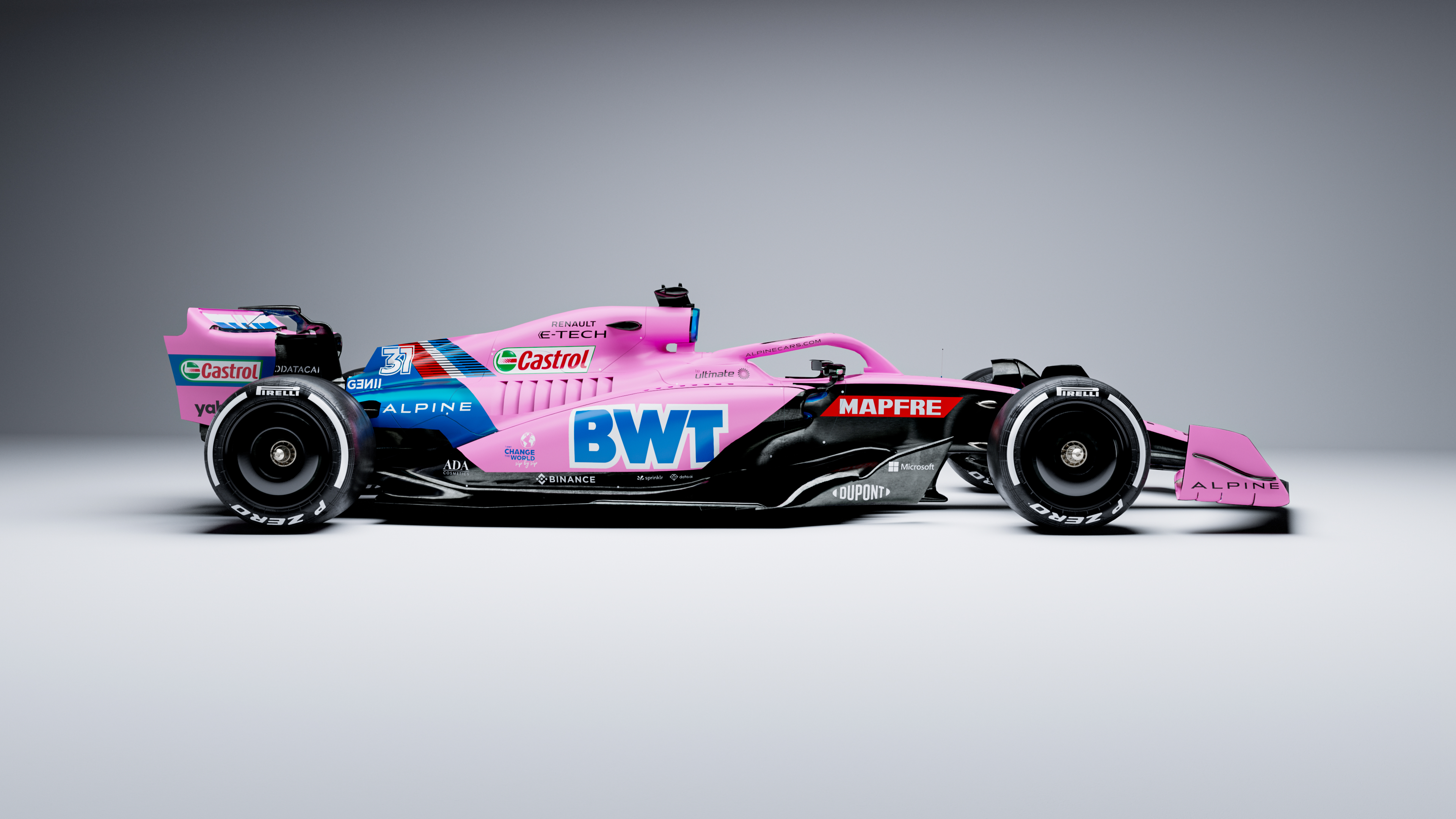
The renders feature a double wishbone with pushrod-operated inboard suspension components.
The trackrod is higher relative to the top wishbone than on the Ferrari, almost in line with the top wishbone whereas the Mercedes is in line.
With the larger 18” rims, teams have taken the opportunity to raise the outer end of the top wishbone, but as the wheel is round and you need a steering arm length of around 75mm within that wheel, it means that if the wishbone is as high as possible the trackrod needs to be that bit lower.
If you set the trackrod first then the wishbone wouldn’t be as high as possible. This is the compromise you need to make in controlling the front wing trailing edge wake.
FRONT BRAKE DUCTS
The inner wheel shrouds, like everyone else’s, blend into the mudguard and into the lower tyre squirt horizontal-ish lower vane.
Again, like everyone else, there is a vertical vane mounted low down turning that tyre squirt back into the low pressure behind the front tyre.
UNDERFLOOR LEADING EDGE
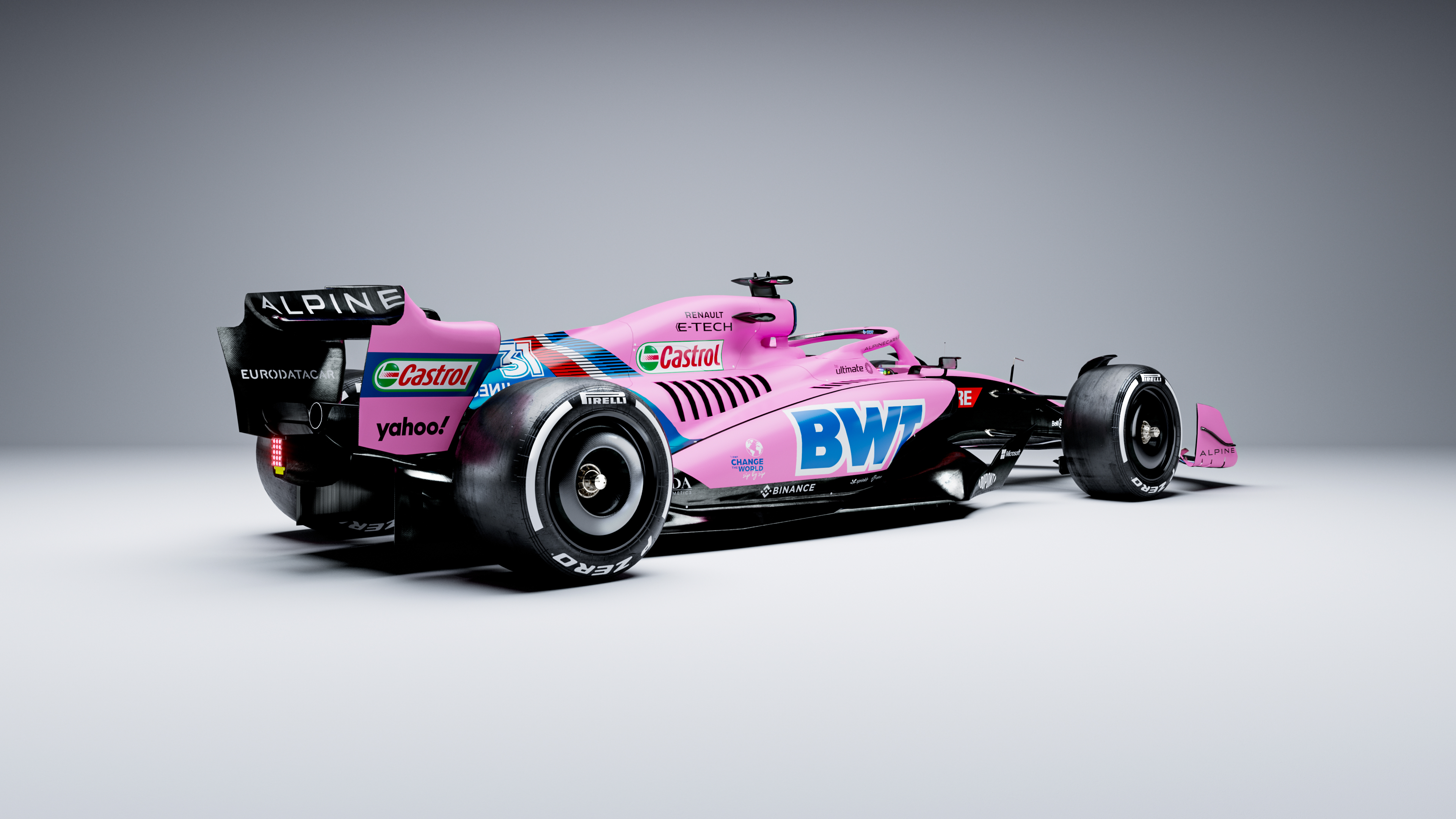
This is a fairly high leading edge and more uniform than others.
The outer bargeboard vane is more or less full length to protect the underfloor from the turbulent front tyre wake. It looks like there are two inner splitters, but there may be a third hidden away inside there.
SIDEPODS
The sidepods are full width at the top section, with a letterbox-style radiator inlet.
Below that, the Alpine has a reasonably aggressive sidepod leading corner undercut to induce some outwash, helping to scavenge excess airflow out from the forward corner of the underfloor.
Behind that is a reasonable undercut running down the side of the floor’s top surface to pull airflow into the Coke bottle area and over the top of the diffuser upper surface.
Alpine also drops the top of the sidepod off reasonably smoothly, but nowhere near as aggressively as the Mercedes. From this, you could deduce Alpine has a bit of flow into that Coke bottle area from all directions but is not really committed to any one solution.
AIRBOX INTAKE

The intake is smaller than we have seen from Alpine in the past and runs into a much neater plenum cover than last year’s. This area of the car was christened the ‘pregnant cow’ last year and there was good reason for that.
RADIATOR EXIT
Louvres above the radiator location and on the sides of the engine cover will remove some of the hot air fairly early on in the flow structure. There is still a rear exit just at the rear top wishbone and wheel centre line location.
Alpine says it reduced the cooling requirement for this years PU package by something like 15%. If true that is a massive advantage over last year’s requirement. Remember, airflow used for cooling is wasted as far as using it to produce downforce.
COKE BOTTLE AREA
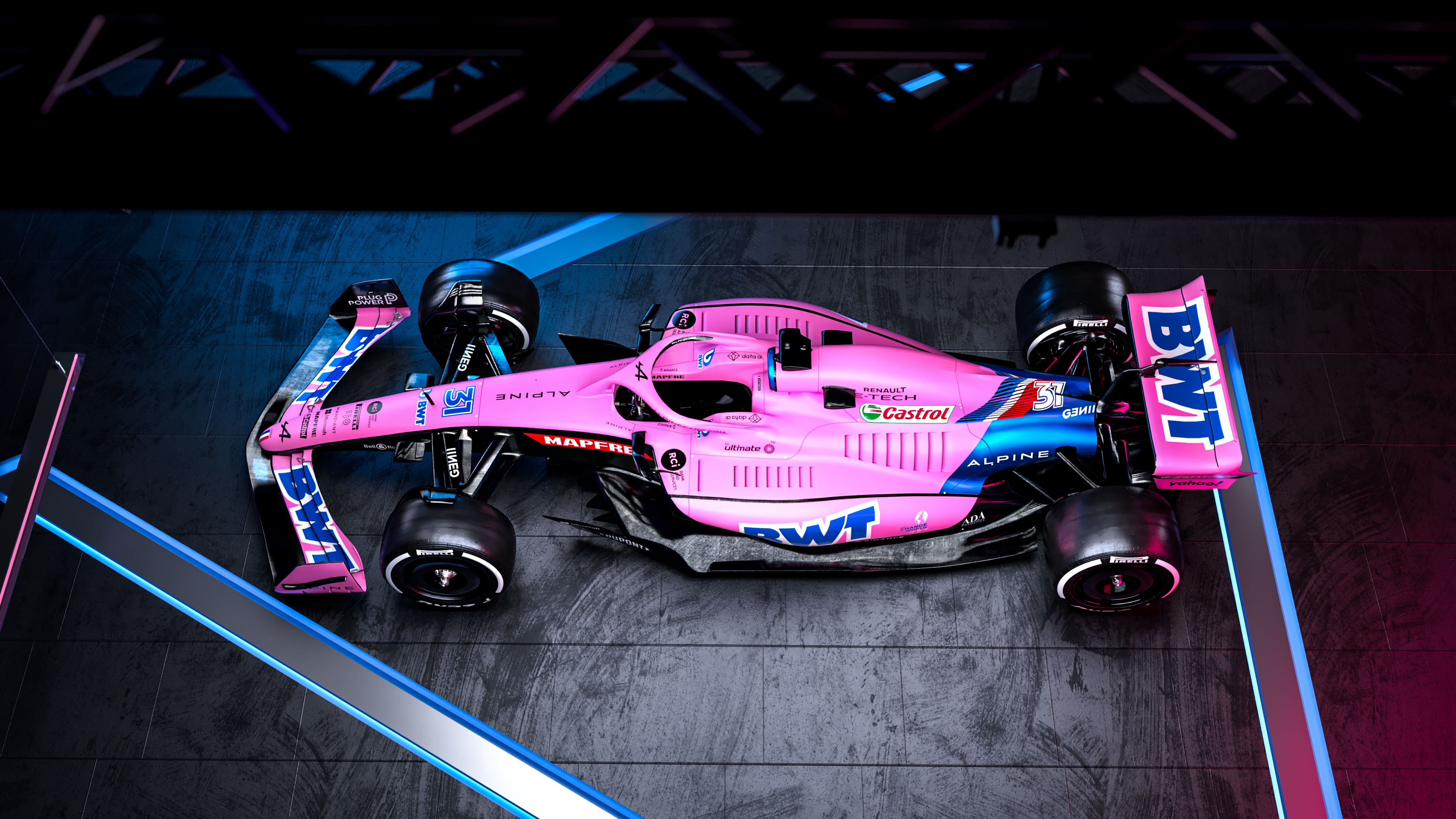
Where the rear radiator exits the body will be undercut to increase the volume of the Coke bottle, getting the maximum flow through this area and over the diffuser’s upper surface, this is critical to the performance of the rear of the car. So this area is a prime mover when it comes to the overall package.
From this overhead view, you can see how short a chord the fourth element of the front wing is. If this is all it needs to balance the car with this rear wing level then perhaps Alpine has found the magic bullet as far as underfloor downforce is concerned.
REAR SUSPENSION
There’s not much to say about this other than it looks like a pullrod-operated system. If what we see is correct, I would say that Alpine’s lower wishbone forward leg is a long way forward, completely opposite to the Mercedes way of thinking, and that of quite a few others.
REAR WING
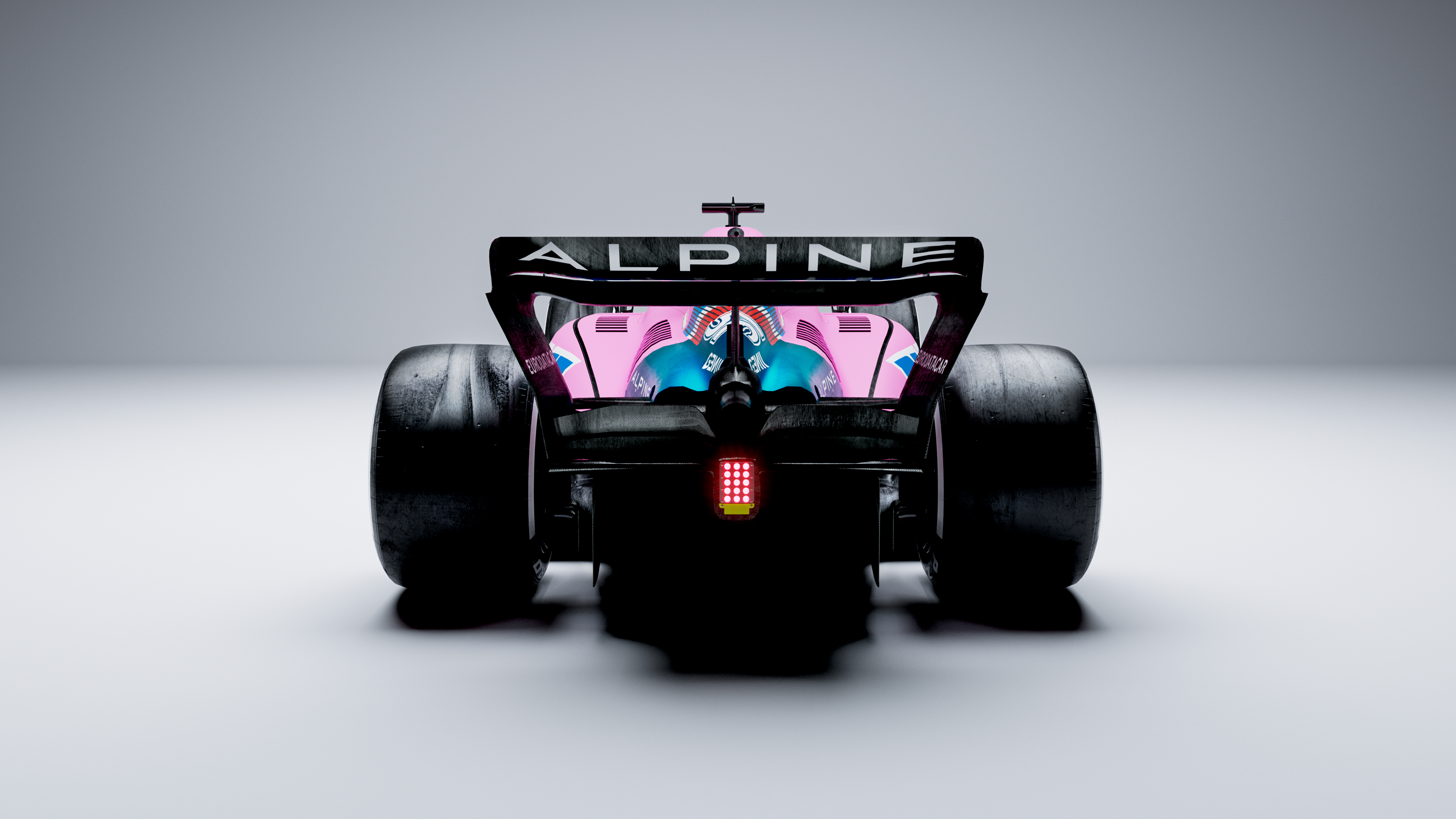
Nothing unusual here. It’s a fairly flat mainplane and flap with a Gurney flap across the DRS opening section. There’s a central pillar mounting running neatly into the DRS actuator.
But other than the rear wing, the detail is light at the rear – we can see nothing of the diffuser and rear brake ducts.
CONCLUSION
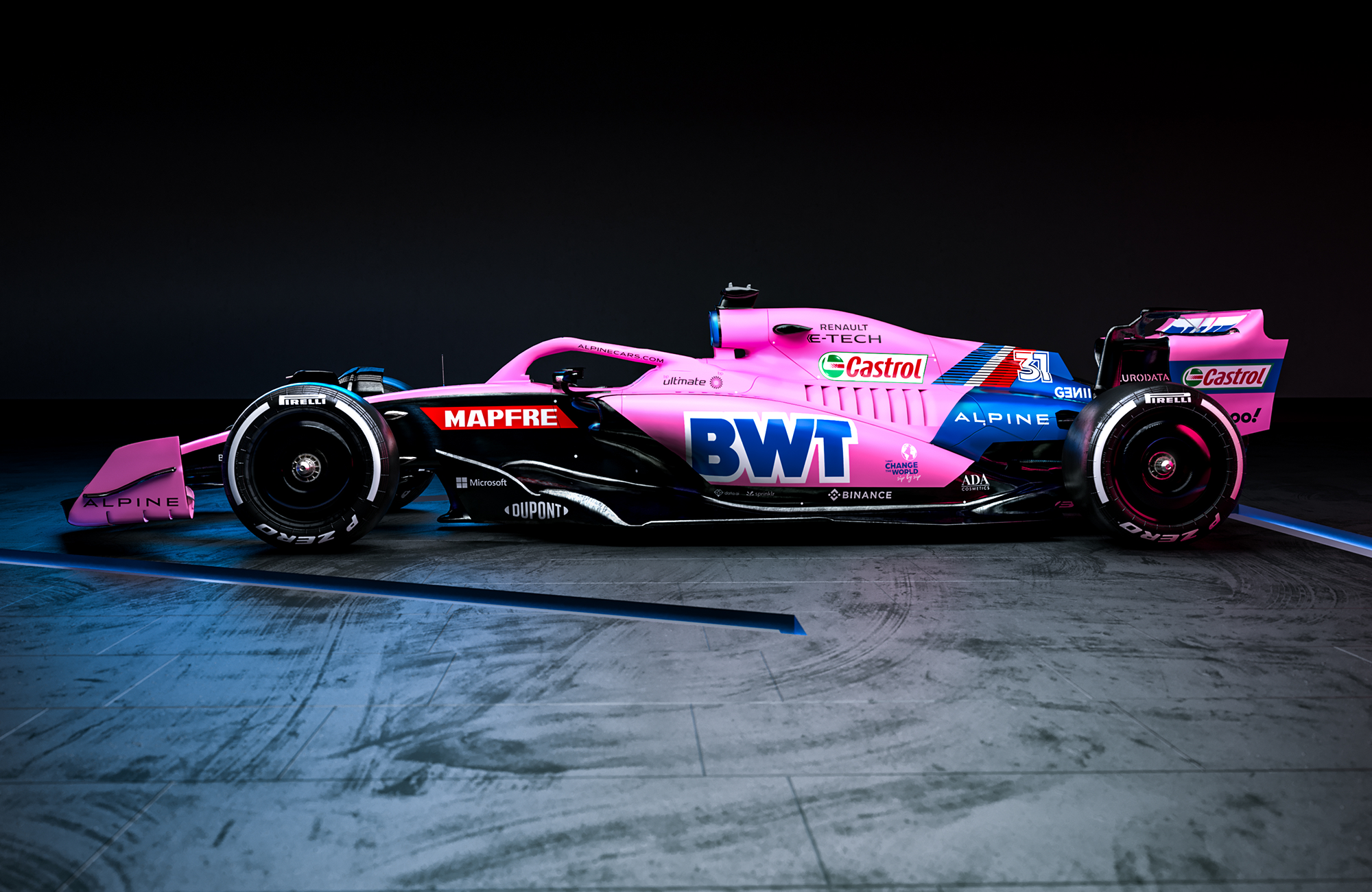
There’s not a huge amount to say about the Alpine simply because I can’t be sure what we are seeing has much to do with what we will see at tomorrow’s Barcelona shakedown. Although it is in theory based on the real car design, we don’t know how early a version it is and what’s missing.
But it does look like a neat and tidy package and somewhere positive to start from. The development direction that all the teams will take will be driven by what others have come up with for their first iterations, so getting up and running on time is critical to sorting out reliability.
Making sure that what you have created correlates on track to what you have predicted is also essential. From there on in, it’s going to be about budget caps and who spends the most wisely.
Alpine appears to have a solid starting point, but there’s a long way to go before its rivalling the top teams in terms of design detail.






